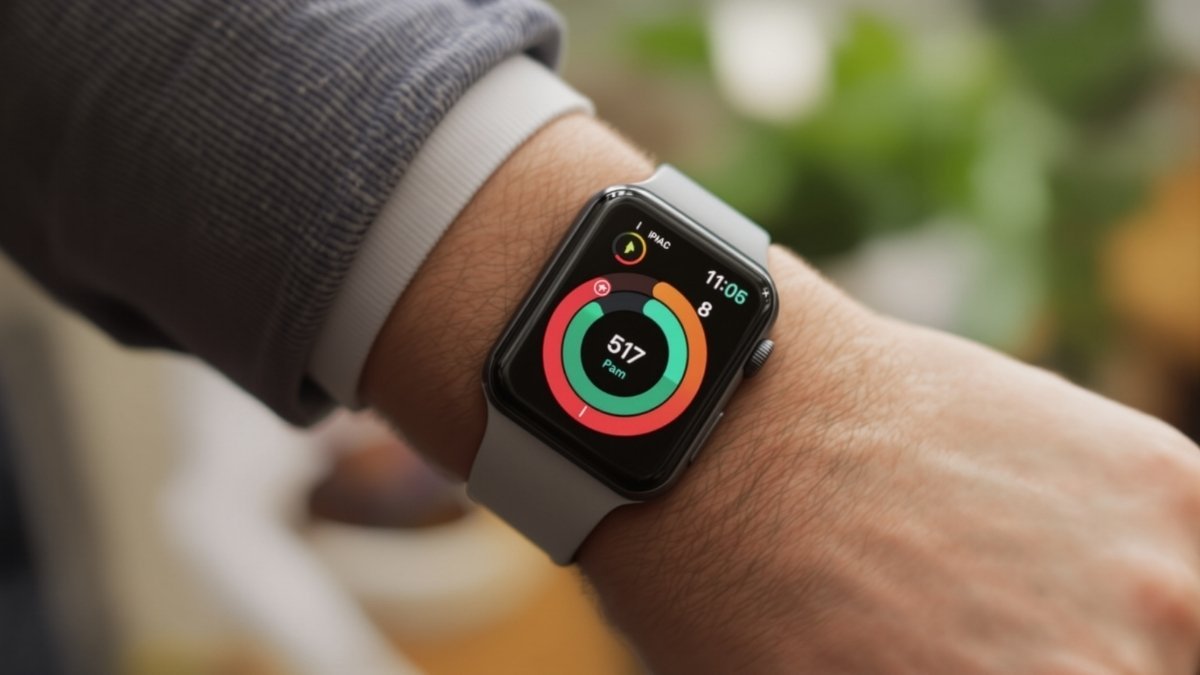
Let’s be honest, it feels like we’re all running on a frayed wire these days. If you feel more anxious than you used to, you’re not alone. A 2024 poll found that a staggering 43% of adults in the U.S. feel more anxious than they did last year—that’s up from 37% in 2023 and 32% in 2022. We’re worried about the economy (77% of us), the election (73%), and violence (69%).1 It’s a lot.
And at the same time, something else has been happening. We’ve strapped tiny, powerful computers to our wrists. The wearable tech market is exploding, projected to hit over $191 billion by 2032. More than a third of us are using some kind of health app or wearable, with around 400 million of these devices shipped in 2024 alone.
This isn’t a coincidence. As the world outside feels more chaotic, we’re desperately looking for a sense of control over our inner world. We want to understand what’s going on inside our own bodies. And tech companies know this; they’re marketing these devices as tools to empower us. Buried inside that watch you wear every day is a feature that promises to do just that—to give you a window into your body’s real-time reaction to stress. But it’s often hidden, and almost always misunderstood.
This is your guide to finding it, turning it on, and actually understanding what it’s trying to tell you.
So, What Is Your Watch Actually Seeing?
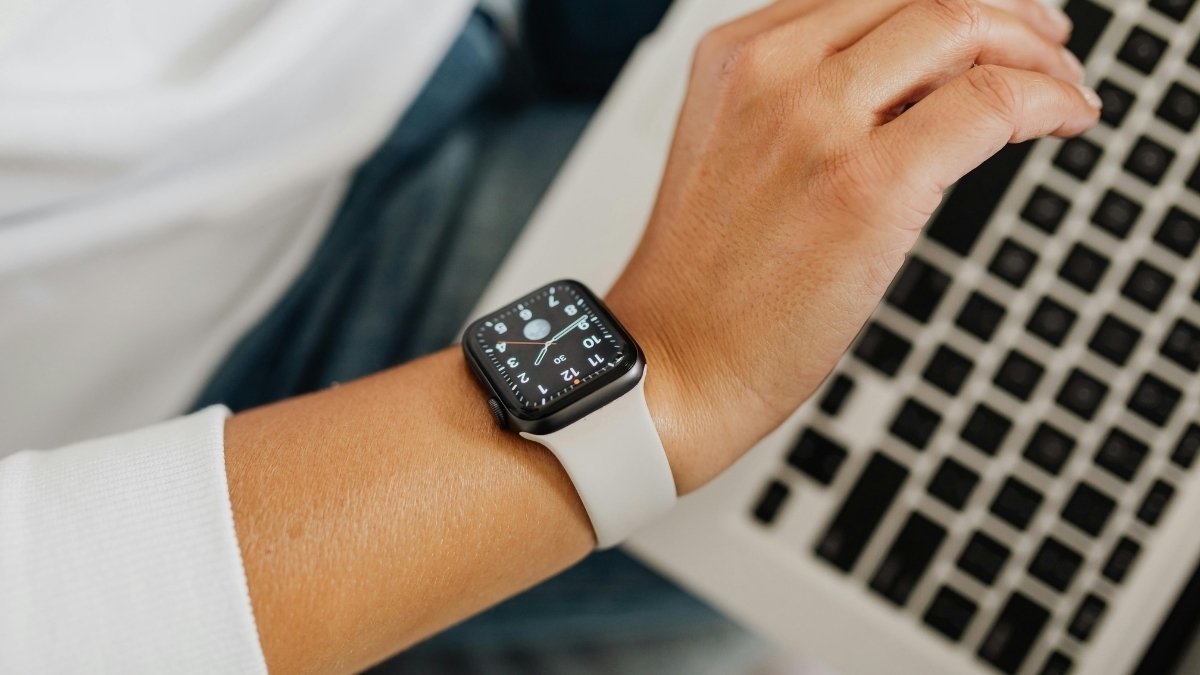
First, let’s get the most important thing straight: your watch cannot read your mind. It has no idea that you’re stressing about a deadline, replaying an awkward conversation, or feeling a wave of anxiety in traffic. It doesn’t measure emotions.
What it does measure, with incredible precision, is your body’s physical, automatic reaction to… well, everything. Think about it this way: when you get nervous before a presentation, you feel anxious. But your body does things. Your heart might race, your palms might get a little sweaty. Your watch is an expert at spotting the racing heart and sweaty palms, but it’s completely blind to the feeling of anxiety.
Stress, in the language of your watch, is just a state of heightened physical readiness. It’s your body’s “fight-or-flight” response kicking into gear. Getting this distinction is the key. Once you do, this feature stops being a confusing number and starts being a genuinely useful tool.
Let’s Get Nerdy for a Second: How Your Watch Listens to Your Body
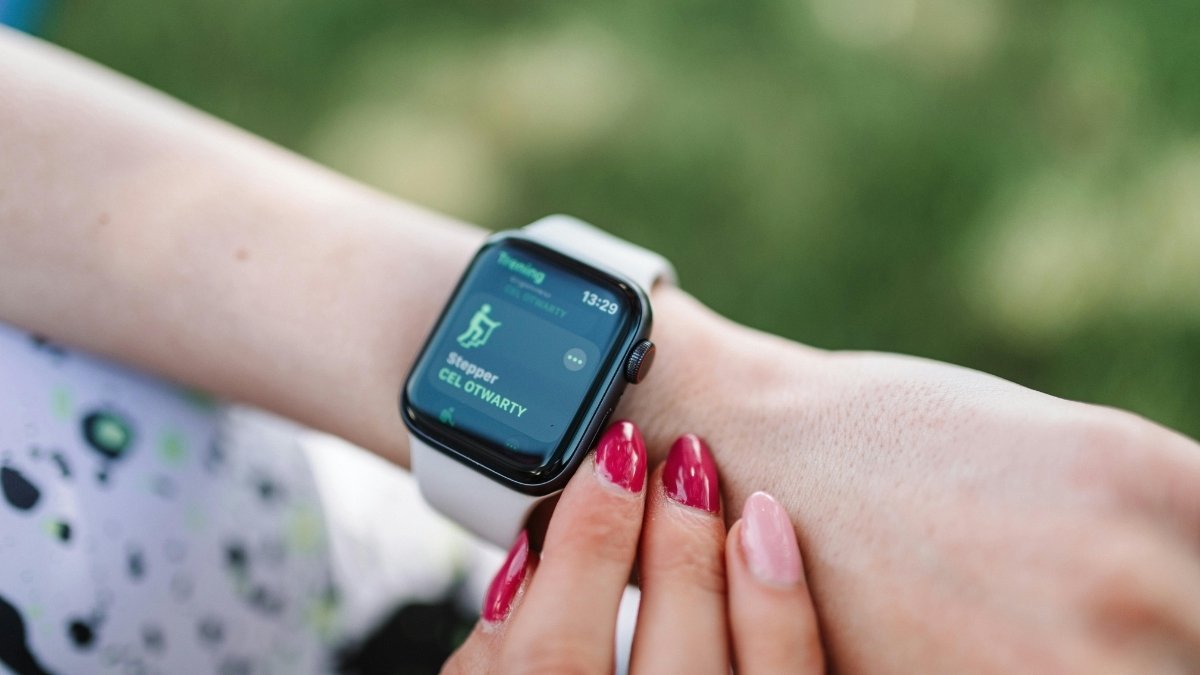
The tech that powers this isn’t magic; it’s just really clever science. Your watch uses a few optical sensors to watch for tiny changes in your body that reveal what your nervous system is up to. Early on, it was all about heart rate. But the game has changed. The best devices now use multiple signals—like skin sweat and temperature—to get a much clearer picture. If your heart patterns change and your skin conductivity spikes, the watch can be much more confident that something is actually happening.
The Gas and Brake Pedals of Your Body

Deep inside you is something called the Autonomic Nervous System (ANS). Think of it as your body’s automatic control center. It runs everything you don’t consciously think about—breathing, blood pressure, and, most importantly for us, your heart rate. The ANS has two competing branches that are always in a delicate dance:
- The Gas Pedal (Sympathetic Nervous System – SNS): This is your “fight-or-flight” system. It hits the gas when you need to be ready for action—whether you’re facing a real danger, giving a big presentation, or even just getting excited about something good. It floods you with adrenaline, makes your heart beat faster, and gets you ready to move.
- The Brake Pedal (Parasympathetic Nervous System – PNS): This is your “rest-and-digest” system. It takes over when things are calm, allowing your body to repair, conserve energy, and chill out. It’s most active when you’re relaxing or sleeping.
A healthy person can switch smoothly between these two. But when you’re chronically stressed, it’s like the gas pedal is stuck to the floor. Your watch’s stress tracking is, at its core, just a very sophisticated attempt to figure out which pedal is being pushed harder at any given moment.
Heart Rate Variability (HRV): Your Body’s Secret “Adaptability” Score
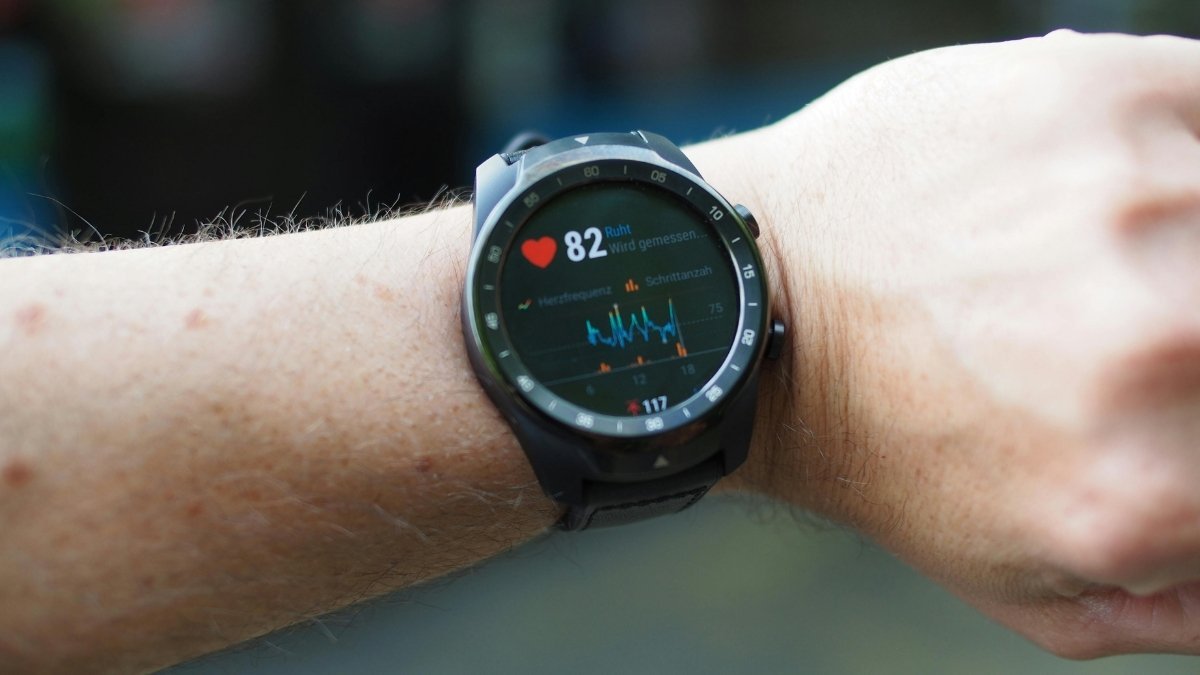
The main way most watches (including Garmin, Samsung, and the apps for Apple Watch) do this is by measuring something called Heart Rate Variability, or HRV. And no, this is not the same as your heart rate.
Heart rate is just the number of beats per minute. HRV is the tiny, millisecond-level difference in time between each of those heartbeats. You might think a perfectly steady, metronome-like heartbeat is a good thing, but it’s not. A healthy, relaxed heart is actually constantly making tiny adjustments to its rhythm. That variability is a direct signal of how balanced your nervous system is.
- High HRV (More variation): This is a great sign. It means your “brake pedal” (PNS) is active and your body is rested, resilient, and ready to adapt to whatever comes its way. It’s associated with lower stress and better fitness.
- Low HRV (Less variation): This means your “gas pedal” (SNS) is in control. Your heart is beating in a more rigid, monotonous pattern. This is the signature of the fight-or-flight response and can be a sign of stress, fatigue, or even getting sick.
So, by tracking these microscopic changes, your watch is essentially giving you a score for how adaptable and recovered your body is.
Electrodermal Activity (EDA): Your Skin Is Talking
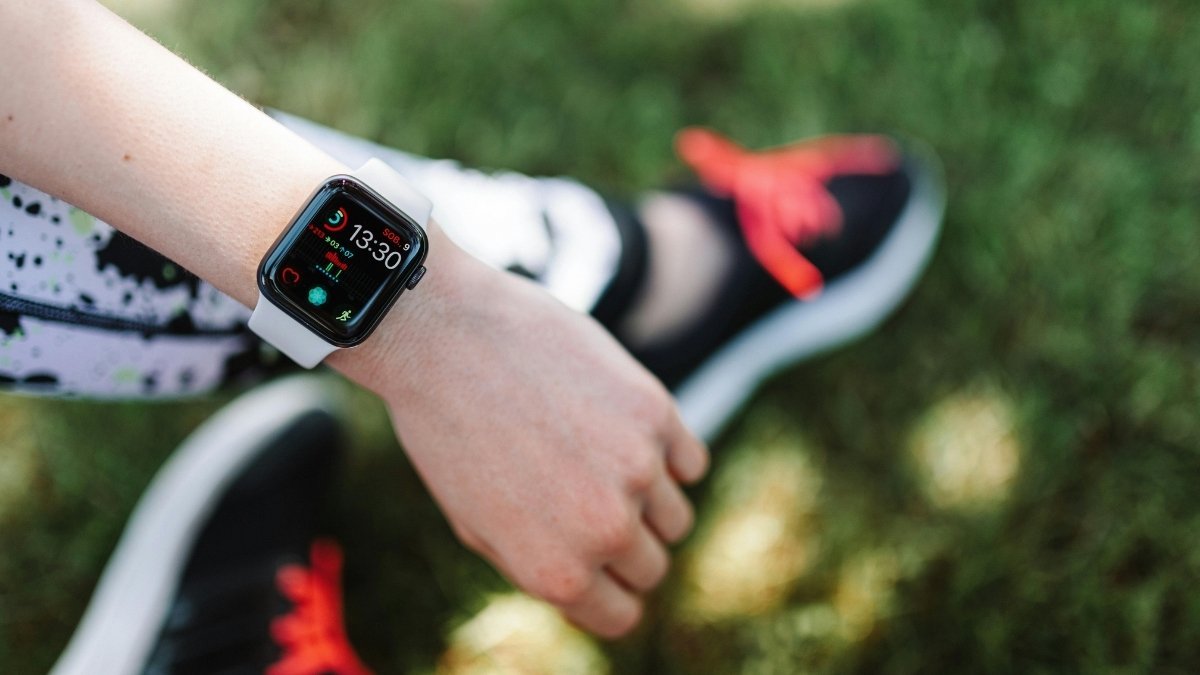
Some of the newer watches, like the Fitbit Sense and Google Pixel Watch, have another trick up their sleeve: an electrodermal activity (EDA) sensor. This is another direct line to your “gas pedal.”
Here’s how it works: your SNS controls your sweat glands. When you get stressed or excited, your skin produces tiny, imperceptible amounts of sweat. This moisture makes your skin a better conductor of electricity. The EDA sensor passes a tiny, safe electrical current across your skin and measures how easily it flows. The more conductive your skin, the more your SNS is firing up.
Researchers at Google saw this in action on a massive scale. They looked at anonymized data and saw huge spikes in skin conductance on Thanksgiving Day (validating that, yes, holidays are stressful). Even cooler, during Super Bowl LVII, they saw the average skin conductance for users in Kansas spike during the game-winning field goal, while users in Pennsylvania… well, their data looked a lot less excited. It’s a real-time look at our collective physiological reactions.
Skin Temperature: The Body’s “Battle Stations” Signal
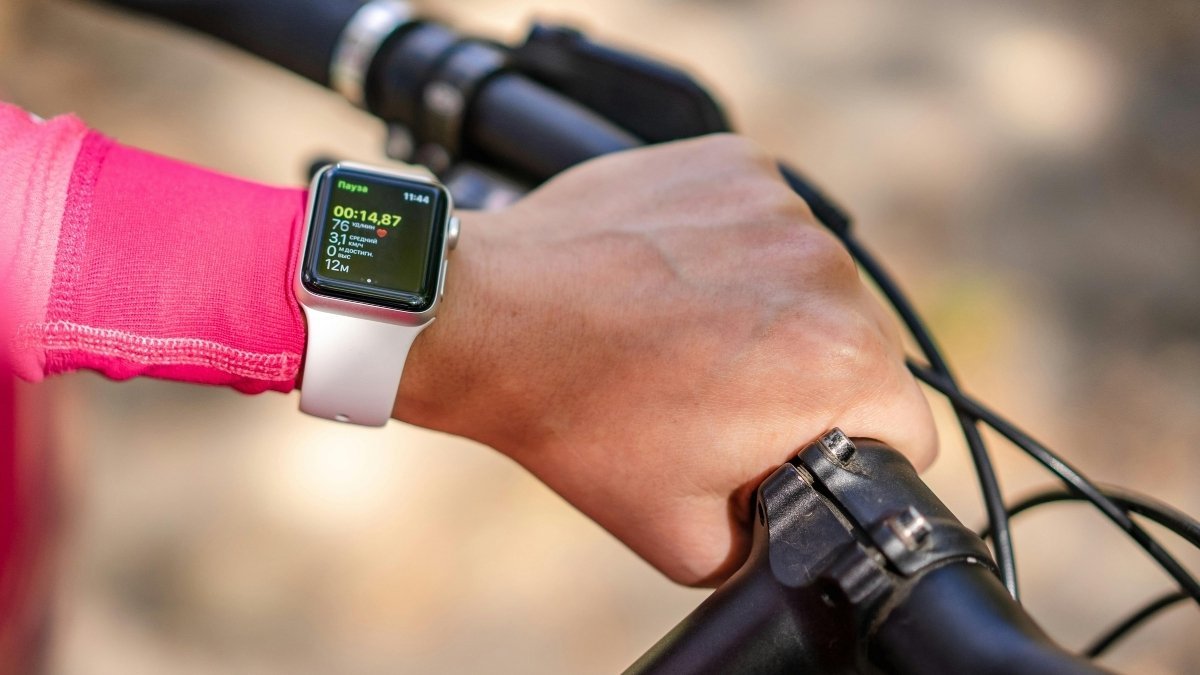
Finally, some watches also track skin temperature. When your fight-or-flight response kicks in, your body does something called peripheral vasoconstriction—it narrows the blood vessels in your extremities, like your hands and wrists.
This is a survival mechanism. It shunts blood away from your skin and toward your major muscles, getting you ready to fight or run. The direct result? The temperature of the skin on your wrist drops, and it’s something your watch can measure. Studies have even shown that the bigger the stressor, the bigger the temperature drop, making it another useful piece of the puzzle.
Okay, How Do I Turn This Thing On? A No-Nonsense Guide
Different brands have totally different philosophies here. Garmin and Fitbit want to give you a finished “product”—a simple score they’ve calculated for you. Apple, on the other hand, gives you a powerful “platform.” Your Apple Watch is meticulously gathering all the raw data (like HRV), but it doesn’t give you a stress score out of the box. It leaves that to third-party app developers. Samsung is somewhere in the middle, offering a native score but also integrating it into a bigger wellness picture. Knowing which camp your watch falls into is the first step.
For Garmin Users: It’s Called “Stress Level”
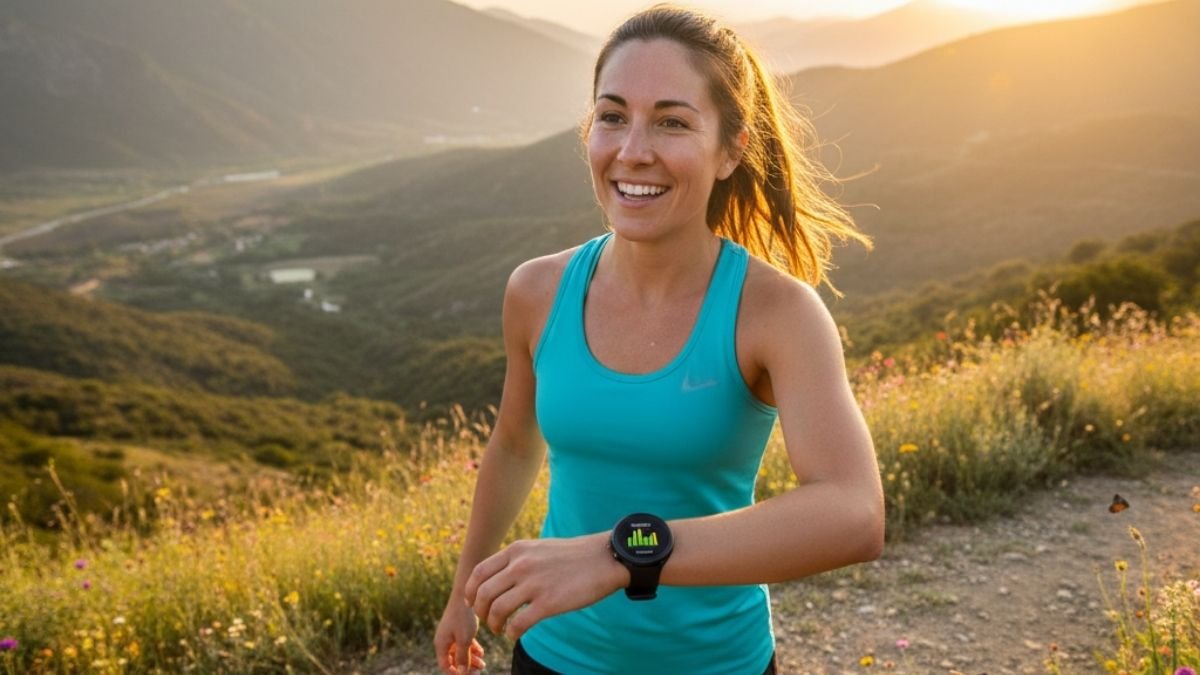
- What it is: Garmin’s All-Day Stress Tracking is powered by the well-respected Firstbeat Analytics engine and relies almost entirely on your HRV.
- How to find it on your watch: It’s probably already on. Just scroll through your widgets or “glances” until you see the “Stress Level” screen. You’ll see your current score and a graph of the last few hours.
- How to see it in the app (Garmin Connect):
- Open the app and tap
More(the three dots in the bottom right). - Go to
Health Stats>Stress. - Here you can see your whole day mapped out, plus trends over weeks and months. It’s worth adding this to your “My Day” dashboard for a quick look.
- Open the app and tap
For Fitbit Users: The “Stress Management Score” and EDA

- What it is: Fitbit gives you a “Stress Management Score” from 1 to 100. Here’s the twist: a higher score is better. It means your body is handling stress well. It’s calculated using three things:
- Responsiveness: Your HRV, resting heart rate, and, on some models, EDA data.
- Exertion Balance: How much physical activity you’re doing.
- Sleep Patterns: The quality of your sleep.
- How to find it in the app: It’s a tile right on the
Todaytab. To get a score, you need to wear your device for a full day and night, get at least 500 steps, and log at least three hours of sleep. - Using the EDA Scan (on Sense and Charge models): This is an active thing you do.
- Open the “EDA Scan” app on your device.
- Choose a session length (a 2-minute scan is a great start).
- Place your palm or fingers on the metal parts of the device.
- Stay still and just breathe.
- It will tell you how many “EDA responses” it detected. When you’re trying to relax, the goal is to have fewer responses.
- Heads up: Seeing the detailed breakdown of your score is a Fitbit Premium feature.
For Samsung Galaxy Watch Users: The “Stress” Tracker

- What it is: Your Galaxy Watch uses its BioActive Sensor to track your heart rate and HRV to figure out your stress level.
- How to use it on your watch: You have two options.
- Manual Check: Go to the
Samsung Healthapp on your watch, find theStresstile, and tapMeasure. Stay still! - All-Day Tracking: To turn this on, go into the
Stresstile settings within the Samsung Health app on your watch and toggleMeasure continuouslyto ON. Just know this will use more battery.
- Manual Check: Go to the
- How to see it: The watch shows a simple color-coded bar, from green (low stress) to red (high stress). You can dive into the history in the Samsung Health app on your phone.
For Apple Watch Users: The “Hidden” Feature You Need an App For

- Here’s the deal: This is the part that confuses most people. Your Apple Watch does not have a built-in stress score. This is a deliberate choice by Apple. But, and this is a big but, your watch is excellent at collecting the most important raw data: Heart Rate Variability. It’s all being saved securely in your Apple Health database.
- The solution: You unlock this “hidden” feature by downloading a third-party app from the App Store. You then give that app permission to read and make sense of the HRV data your watch is already collecting.
- How to set it up (it’s easy):
- Download an App: Go to the App Store and search for “stress tracking” or “HRV.” Some of the best ones are Stress Monitor for Watch, StressFace, and RelaxWatch. They all have slightly different features, so see which one you like.
- Give Permission: When you open the app for the first time, it will ask for permission to read data from Apple Health. Say yes. You’ll want to grant it access to Heart Rate Variability, Heart Rate, Sleep, etc.
- Put it on Your Watch Face: The best part is adding a “complication” to your favorite watch face. This puts your life stress score right on your screen, so you can see it with just a glance.
How to Become Your Own Body’s Detective

Okay, so you’ve got the data. Now what? A number on a screen is useless unless you know how to read it. This is where you stop being a passive user and start becoming a detective of your own body.
First, Know Your Score
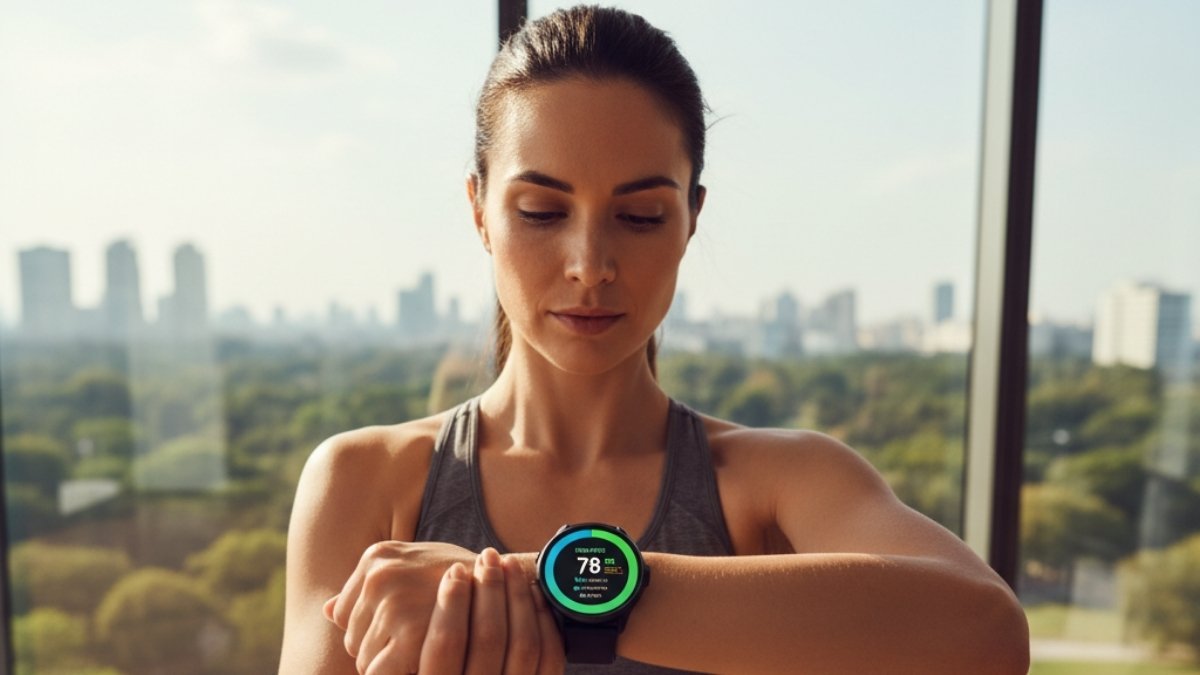
This sounds simple, but it trips people up. Different brands decided to score things in opposite ways.
- Garmin (0-100): Lower is better. This is a direct measurement of your physiological stress.
- 0–25 (Blue): You’re in a resting, recovery state. Your “brake pedal” is on.
- 26–100 (Orange): You’re in a stressed state. Your “gas pedal” is on.
- Fitbit (1-100): Higher is better. This isn’t a stress score; it’s a “stress management” score.
- A high score means your body is showing few signs of physical stress. You’re recovered and ready.
- A low score means your body is under strain, and you should probably take it easy.
- Samsung: Uses a simple visual graph from green (chilling) to red (stressed).
- Apple Watch Apps: They vary, but most use a 0-100 scale or simple words like “Calm,” “Balanced,” or “Overload” to make it easy.
Connect the Dots: Find Your Triggers
This is the most powerful part. Your watch gives you the “what” (a stress spike at 2:15 PM), but you have to provide the “why”. Open the app, look at the timeline, and ask yourself: What was I doing at 2:15 PM?
Was it that meeting with your boss? The frustrating call with customer service? The third cup of coffee you probably didn’t need? You’ll start to see patterns you never noticed before.
And remember, not all stress is bad! A spike could also be from the excitement of a first date, the thrill of watching your team win, or the nervous energy before a race. Your body’s physical reaction is often the same for good and bad excitement. Seeing an orange bar doesn’t automatically mean something is wrong.
Look for the Big Picture
Don’t obsess over a single high reading. That’s a recipe for more anxiety. The real gold is in the long-term trends.
Look at your data over weeks or months. Are your stress levels always higher on weekdays? Do you see a spike every Sunday night? What happens to your score the day after you have a couple of drinks? (Spoiler: for many people, alcohol absolutely tanks their scores, and seeing the data makes it shockingly clear).
This is how you move from just tracking data to actually learning from it. You start to see, in black and white (or blue and orange), how your choices directly impact your body’s ability to recover.
To make it super simple, here’s a cheat sheet:
Smartwatch Body’s Detective: Stress & Wellness Score Comparison
So You Got a Stress Alert. Now What?
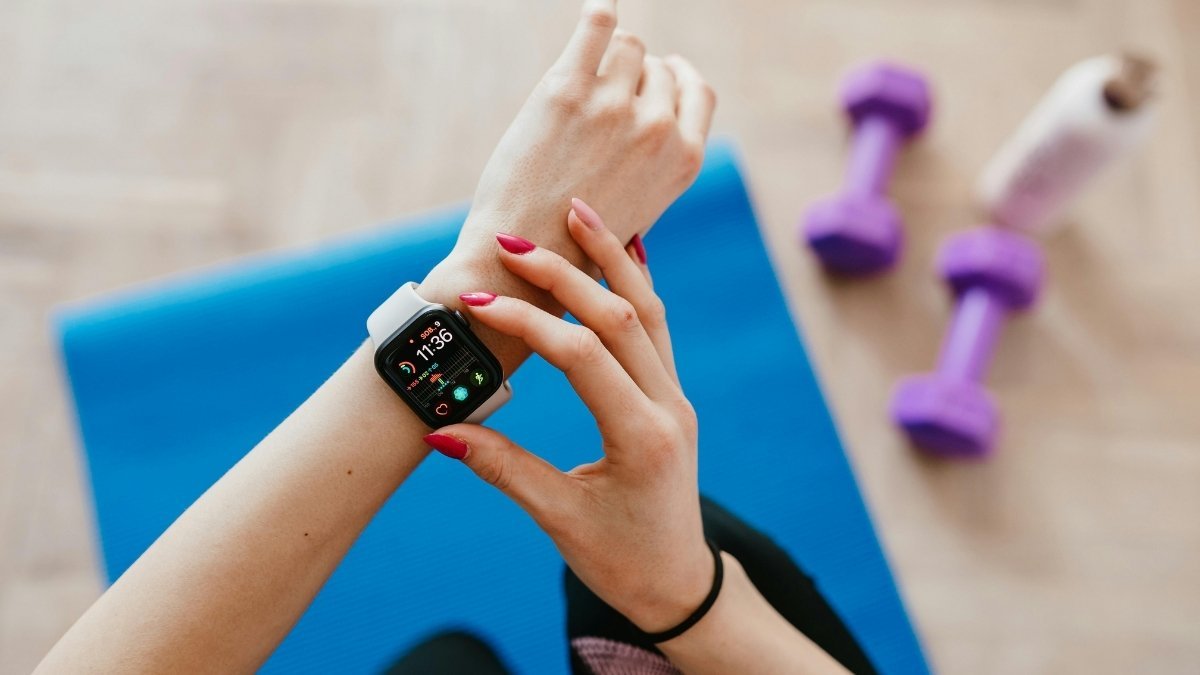
Okay, so your watch buzzed and told you you’re stressed. The goal isn’t to panic. The goal is to use that moment to do something about it. This is where your watch transforms from a passive tracker into an active coach. It creates a powerful biofeedback loop: Detect -> Alert -> Act -> Reinforce. You get an early warning, you do something about it, and over time, you actually train your nervous system to be more resilient.
Your New Superpower: The Guided Breath
Almost every watch that sends a stress alert will immediately suggest the same thing: a guided breathing exercise. This isn’t just some fluffy wellness advice. It’s a direct hack into your nervous system.
Slow, deep breathing, especially when you make your exhale longer than your inhale, directly stimulates something called the vagus nerve. This nerve is basically the master switch for your “brake pedal” (the parasympathetic system). When you stimulate it, you are manually telling your body to calm down. It immediately increases your HRV. In other words, you are using your breath as a remote control for your body’s stress response.
Try this right now. It’s called “Box Breathing”:
- Inhale slowly for a count of four.
- Hold your breath for four.
- Exhale slowly for four.
- Hold your breath for four.
- Repeat for a minute or two. You’ll feel a difference.
Play the Long Game: Build a More Resilient Body
While breathing is great for in-the-moment spikes, the real win is improving your baseline resilience so you have fewer spikes to begin with. A higher baseline HRV means a healthier, more adaptable nervous system. Here’s what the science says actually works:
- Get Serious About Sleep: This is the non-negotiable number one. Consistent, high-quality sleep is when your nervous system does all its repairs. Make your room dark and cool, and try to stick to a schedule.
- Move Your Body (But Don’t Overdo It): Regular cardio is fantastic for HRV. But remember, exercise is a form of stress. Overtraining without enough rest will crush your HRV. It’s all about balance.
- Hydrate and Eat Your Greens: Drinking enough water is fundamental. And weirdly specific, research has found a direct link between eating more leafy greens like spinach and kale and having healthier HRV scores.
- Rethink That Drink: As we mentioned, alcohol is a massive stressor on the body. It reliably suppresses HRV and wrecks your sleep quality. Your watch data will be brutally honest about this.
- Go Outside: There’s a reason a walk in the woods feels so good. The Japanese call it “forest bathing” (shinrin-yoku), and studies show that spending time in nature measurably lowers stress hormones and improves HRV.
- Practice a Little Mindfulness: You don’t have to become a monk. Even 20 minutes of meditation a day has been shown to significantly increase baseline HRV. It’s like strength training for your parasympathetic nervous system.
The Brutally Honest Part: Accuracy, Myths, and What the Experts Really Think

This technology is amazing, but it’s not perfect. And if you treat it like it is, you can actually make yourself more anxious. So let’s clear the air and talk about what’s real and what’s hype.
Myth #1: My watch knows I’m emotionally stressed.
The Hard Truth: It has no clue. And the science proves it. This is the biggest myth of all. A major study from Leiden University tracked 800 people with Garmin trackers for three months. They compared the watch’s stress data to how stressed the people said they felt. The result? The correlation was, in the words of the researchers, “basically zero”.
Eiko Fried, one of the study’s authors, put it perfectly: “Changes of heart rate alone tell us little about a person’s context: your heartbeat could be increased due to experiencing not only a negative, but also a positive emotion. For example, you could be afraid or excited, stressed or sexually aroused”. For a quarter of the people in the study, the watch showed the exact opposite of what they were feeling—telling them they were relaxed when they felt a panic attack coming on.
Myth #2: The data is 100% accurate.
The Hard Truth: These are consumer gadgets, not medical devices. They’re getting better all the time, but they are not flawless.
- The Gold Standard: In study after study, a chest strap monitor that measures the heart’s electrical signals (ECG) is way more accurate than the optical sensors on your wrist (PPG).
- Movement is the Enemy: The accuracy of wrist sensors plummets when you’re moving around a lot, especially during intense exercise. All that motion can mess with the signal.
- Not All Watches Are Created Equal: Independent studies have consistently shown that the Apple Watch tends to be one of the most accurate for heart rate monitoring. Other brands can have higher error rates, especially during workouts. Even things like how tight you wear it or your skin tone can affect the readings.
The Hidden Danger: Are You Giving Yourself “Data Anxiety”?
Here’s the irony. A tool designed to help you manage stress can, for some people, become a new source of it. Experts are starting to warn about health anxiety fueled by these devices.
You know the feeling. You start checking it. And re-checking it. You see a small spike, and your mind starts racing. What’s wrong? Am I okay? This can create a nasty feedback loop. As cardiologist Dr. Daniel Fischman warns, “The act of watching that number rise can trigger anxiety, making the number rise even more – like an endless cycle”. One study even found that people who wear wearables report higher rates of symptom monitoring and health anxiety than people who don’t. Remember Dr. Fischman’s advice: “There’s no such thing as ‘Dr. Watch'”. This is a guide, not a diagnosis.
A Quick Word on Privacy (Because You Should Be Thinking About It)
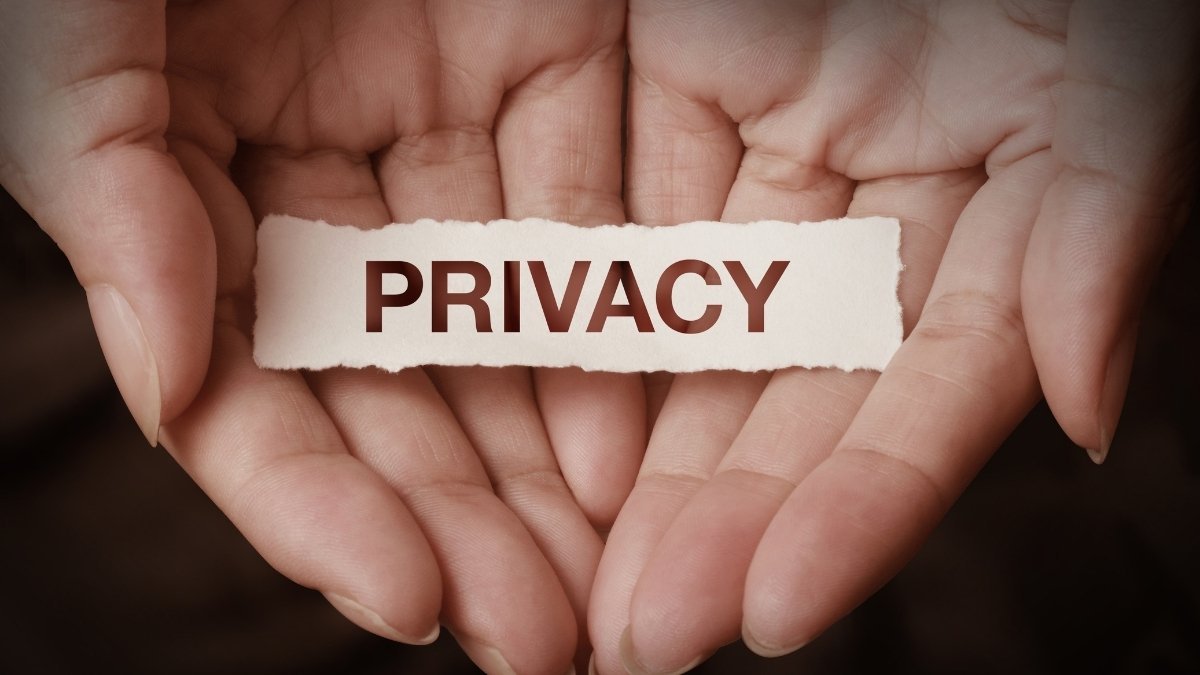
When you use these apps, especially the third-party ones, you’re handing over some of the most sensitive data you have. And here’s a critical legal point most people don’t know: most of these apps are not covered by HIPAA, the law that protects your medical records. They fall under the Federal Trade Commission (FTC).
The FTC protects you from deceptive practices, but the rules are looser than HIPAA. There have been cases of health apps sharing user data with companies like Facebook for advertising, sometimes even when their own privacy policy said they wouldn’t. So before you grant access to your health data, do yourself a favor and actually read the privacy policy. Ask yourself: Are they selling my data? How is it secured? Can I delete it later?
So, What’s the Point? Your Watch as a Partner, Not a Doctor.
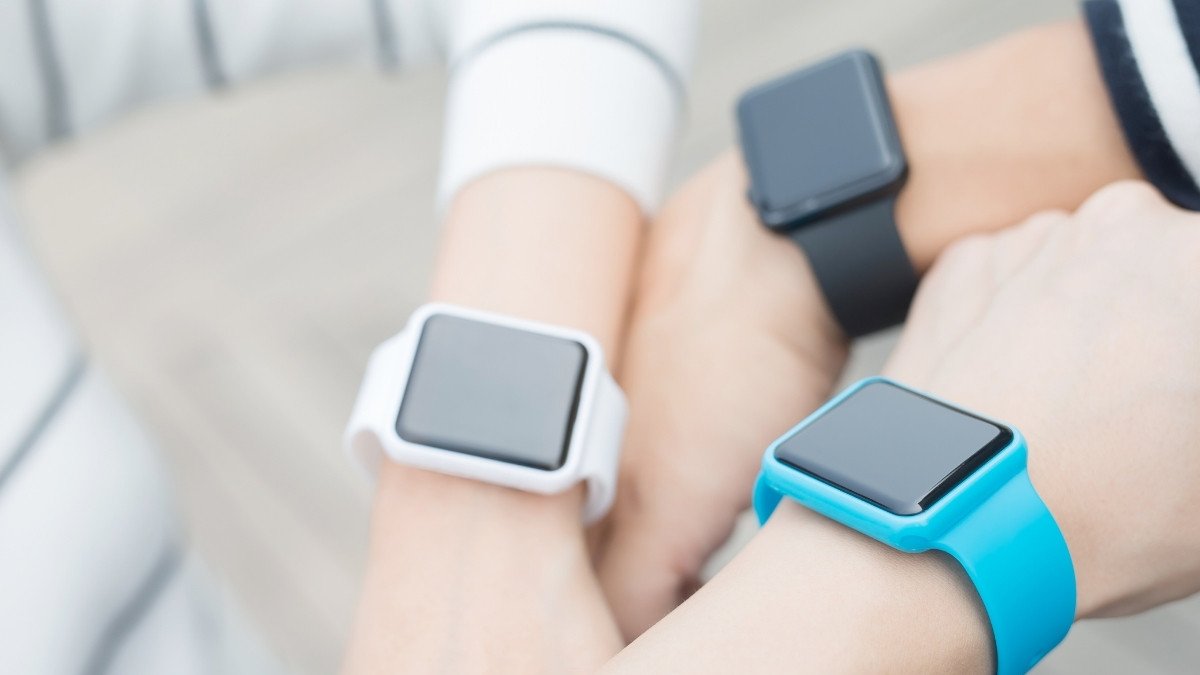
It’s a Conversation Starter
After all this, you might be wondering if this feature is even useful. And the answer is a resounding yes—as long as you use it correctly.
Don’t look at a stress score as a diagnosis or a judgment. Look at it as a conversation starter with yourself.13 When you see a spike, it’s simply a neutral, objective nudge to pause and ask, “Hey, what’s going on right now? What is my body reacting to?”
That simple shift in perspective is everything. It turns the data from a source of anxiety into a tool for mindfulness.
The Real Goal Isn’t a Perfect Score
You’re not trying to get a perfect score of zero stress. That’s not just impossible, it’s not even healthy. A life without any excitement or challenge would be incredibly boring.
The real goal is to use this data to build self-awareness. It’s about catching your body’s automatic, unconscious reactions and turning them into conscious, deliberate responses. When your watch flags a moment of high stress, it’s giving you a choice. A choice to take a few deep breaths. A choice to step away from your desk for a minute. A choice to simply acknowledge the feeling and decide how you want to move forward.
By understanding what your watch is really telling you—and what it isn’t—you can turn it from a simple gadget into a true partner in your well-being. It’s not there to measure your distress; it’s there to help you build your resilience. And that’s a feature worth turning on.






